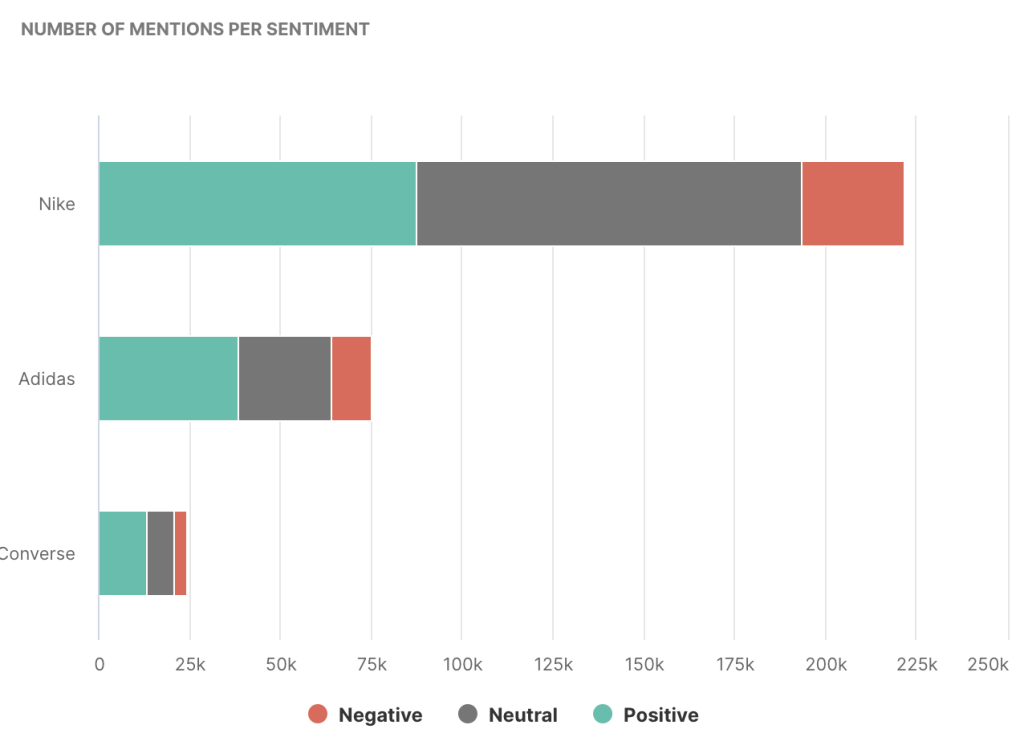It comes as no surprise that more and more people are interested in jumping on the media monitoring white label bandwagon.
Companies of all sizes and industries are capitalizing not only on the transformative business benefits media intelligence provides but also on the enormous reselling potential of these tools. Furthermore, projections suggest that the global media monitoring tools market will reach just short of 12 billion dollars by 2030.
💡 Read Media Monitoring: The Ultimate Guide
This article will explain everything you need to know about media monitoring white label solutions and why considering one might be a great choice for you.
What is White Labeling?
In general, a white label is a product or service made by one company that is then purchased and rebranded by another company or more of them. As opposed to a private label, white label products are not exclusive to one retailer but can be sold to multiple.
Investing in a white label product means that the latter gets a ready-to-market product to which they add their brand, logo, and identity. When done well, the end consumer would probably never associate a white label product with its original producer.

You’d likely be surprised as to how extensively white label products and services are used. From food services to business marketing, the use-cases are as varied as they get.
Still, white-label solutions are probably the most popular in the software industry, with media monitoring tools becoming particularly sought after.
All About Media Monitoring White Label Solutions
The essence of media monitoring is listening to relevant online conversations and transforming those insights into ample data analytics and actionable business intelligence.
In order to identify mentions of your topic, the media monitoring tool’s crawlers will check more than 100 million online sources. That includes websites, social media, blogs, forums, and comments.
While the tool tracks down relevant mentions in real-time and then displays them in a single feed, it also creates easy-to-comprehend visualizations of that data in the form of charts and dashboards.
Take sentiment analysis, for instance.

To put it simply, sentiment analysis is a way of determining the general attitude toward your brand, product, or any other topic of interest.
Although it relies on complex processes like natural language processing, text analysis, and computational linguistics to detect the correct sentiment of your mentions, its output is very user-friendly and practical.
The same goes for more than 2000 predefined charts in Determ that you can also fully customize. Their value and implications are best demonstrated through their enablement of effective online reputation management, lead generation, and competitor analysis.
Suggested read:
What is Digital PR (and why you should become good at it ASAP)
Is a media monitoring white label for you?
More and more brands are recognizing the enormous potential relevant online conversations have. Listening, analyzing, and reacting to them is a must.
What’s interesting is that not only new businesses looking for a boost are turning to media monitoring white label solutions. Established companies and agencies that have already built a significant market presence and gained consumers’ trust are joining in, too.
Specifically, white-label products are great for:
- Media monitoring agencies that can enrich their source base with a custom branded tool,
- PR agencies with their own base of leads and clients they can sell an added service to,
- Diverse software companies that can boost their existing tool kit,
- Experienced martech advisors and consultants, ready for new business ventures.
If you’re in PR and marketing, expanding the scope of your services with a custom media monitoring tool would be a logical step. After all, it is essential to any industry professional.
Think about it. You have a great understanding of your target audience and know all about their needs and pain points, as well as the ins and outs of the industry in general. Maybe even your agency already provides clients with media monitoring as a third-party. Why not make it your own?
From a business perspective, this makes perfect sense.
Common pitfalls of building solutions from scratch
In a world where business development is rapid, there is not much room for error. That is why many businesses who want to reap the benefits straight away, without going through the ups and downs of building their tool choose media monitoring white labels.
Building your solution from scratch costs time and money. It can also be a setup for failure. As Forbes reports, there are common pitfalls this scenario can lead to:
- Making the same mistakes that others before have already made and mastered, or in other words, reinventing the wheel,
- Dramatically slowing down your time to market by troubleshooting and increasing your learning curve outside your core competency,
- Spending too much money developing tools and solutions that already exist in other formats,
- Missing out on resources and expertise in the specific space where you need a focused solution.
There’s a plethora of established, constantly improving, media monitoring tools on the market. Determ is but one of them, with an extra bonus of instantly pushing new features to the white-labeled partners at no extra cost.
Suggested read:
How to Do Market Research With a Media Monitoring Tool?
7 reasons for white labeling
Whether you’re just curious about the idea or seriously considering it, the following reasons might reassure you that media monitoring white labeling is cost-effective and extremely useful.
#1 Save time and money
The most obvious reason for white labeling is the time and money factor. Rather than investing both into research, development, and production, you can get an already established product or service and focus on marketing and sales.
#2 Skip the lengthy development process
On that note, skipping the numerous beta testing and quality assurance processes before launching a product is an enormous benefit. If you’ve ever gone through that phase, you’ll know what I’m talking about. Instead, opt for an unrefined diamond and tweak it.
#3 Minimize the chance of failure
The opportunity to choose a product or service that fits the bill is a luxury. As such, it minimizes the chance of failure since you have much room for testing. If you are unsatisfied with one solution, you move to the other – it’s simple as that.
#4 Alleviate the stress
Likewise, simply choosing a finished product is much more stress-free than developing your own. You can always rely on the original manufacturer’s support if a fix or update is due. Just make sure to choose your partners wisely.
Read 7 Digital Marketing Solutions to Use in 2022
#5 Capitalize on expert knowledge
You don’t have to be a specialist in a certain field, just business savvy enough to know it has business potential and utilize it. Let others do the work they know, and you do yours.
#6 Boost brand awareness
Expanding your branding to any third-party applications you use by white labeling them provides a great awareness and visibility boost. Your clients might also highly appreciate the convenience, given the increasing number of quality services available through your brand.
#7 Out with the costs, in with the ROI
Finally, the ROI. Taking advantage of all the aforementioned benefits is likely to result in a successful and profitable product, minus all the costs associated with in-house developers and development processes in general.

Suggested read:
Brand reputation 101: monitoring, analysis, and management tools
To summarize
As already mentioned, media monitoring is becoming widely implemented for its ability to drive better business decisions based on relevant data.
The technologies media monitoring tools are built upon might be complex, but their output is very simple and actionable. Likewise, building your own media monitoring tool might be very challenging and maybe even counter-intuitive nowadays, but that doesn’t mean you can’t capitalize on media intelligence.
With an abundance of established media monitoring tools available for white labeling, you can skip the years of research and development. Instead, focus your efforts on marketing and sales straight away.
To learn more about Determ’s white label opportunities, feel free to get in touch with our team. We’ll be more than happy to guide you through the process and answer any questions you might have.
Want to see if Determ is the right choice for you?
Book a call with one of our experts.